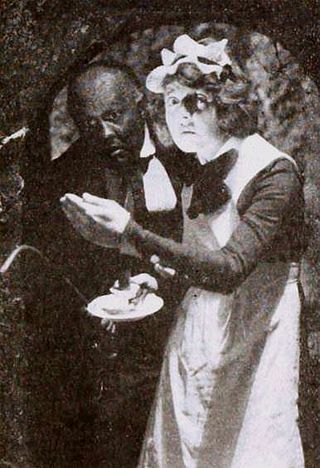The following is an overview of 1925 in film, including significant events, a list of films released and notable births and deaths.
The following is an overview of 1921 in film, including significant events, a list of films released and notable births and deaths.
The year 1920 in film involved some significant events.
1917 in film was a particularly fruitful year for the art form, and is often cited as one of the years in the decade which contributed to the medium the most, along with 1913. Secondarily the year saw a limited global embrace of narrative film-making and featured innovative techniques such as continuity cutting. Primarily, the year is an American landmark, as 1917 is the first year where the narrative and visual style is typified as "Classical Hollywood".
The year 1916 in film involved some significant events.
The year 1915 in film involved some significant events.
1913 was a particularly fruitful year for film as an art form, and is often cited one of the years in the decade which contributed to the medium the most, along with 1917. The year was one where filmmakers of several countries made great artistic advancements, producing notable pioneering masterpieces such as The Student of Prague, Suspense, Atlantis, Raja Harischandra, Juve contre Fantomas, Quo Vadis?, Ingeborg Holm, The Mothering Heart, Ma l’amor mio non muore!, L’enfant de Paris and Twilight of a Woman's Soul.
The year 1912 in film involved some significant events.
The year 1911 in film involved some significant events.
The year 1910 in film involved some significant events.
L'Homme qui vendit son âme au diable is a 1921 French silent film comedy directed by Pierre Caron. The plot was similar to Faust and The Student of Prague, about a man who makes a diabolical deal with the Devil.

Haunted Spooks is a 1920 American silent Southern Gothic comedy film produced and co-directed by Hal Roach, starring Harold Lloyd and Mildred Davis.
Au Secours! is a 1924 short French silent comedy film directed by Abel Gance and starring Max Linder. The French title translates into English as "Help!". The film is also known as The Haunted House in some reference books. The film was made on a dare, with Gance filming the entire project in three days, with the help of his friend, actor Max Linder. Linder had just returned to France after several years of trying to start an acting career in Canada.

The Haunted Bedroom is a lost 1919 American silent drama film directed by Fred Niblo and starring Enid Bennett and Dorcas Matthews. The film was also distributed under the title The Ghost of Whispering Oaks.
The Other Person is a 1921 Dutch-British silent mystery film directed by Maurits Binger and B.E. Doxat-Pratt. It was a co-production between a Dutch film company and a British film company.
Esmeralda is a 1922 British silent film and an adaptation of the 1831 novel The Hunchback of Notre-Dame by Victor Hugo, with more emphasis on the character on Esmeralda rather than Quasimodo. It was directed by Edwin J. Collins and starred Sybil Thorndike as Esmeralda and Booth Conway as the hunchback. The film is considered lost, but extant still photos show a 40-year-old Thorndike who appears to be too old for the role of the young and virginal Esmeralda. This version emphasized romance and melodrama over horror.
Harry Agar Lyons was an Irish-born British actor. He was born in Cork, Ireland in 1878 and died in Wandsworth, London, England in 1944 at age 72.

Carl Alwin Heinrich Neuß was a German film director and actor, noted for playing Sherlock Holmes in a series of silent films during the 1910s. He also played the dual role of Jekyll and Hyde in the 1910 Danish silent film version of Dr. Jekyll and Mr. Hyde, directed by August Blom. He played Jekyll and Hyde again in the 1914 German silent film Ein Seltsamer Fall, scripted by Richard Oswald.
The Grinning Face, aka The Man Who Laughs, is a 1921 Austrian-German silent horror film directed by Julius Herska and starring Franz Höbling, Nora Gregor and Lucienne Delacroix. It is an adaptation of the 1869 novel The Man Who Laughs by Victor Hugo.
Figures of the Night (German:Nachtgestalten) is a 1920 German silent horror film written, directed and produced by Richard Oswald and starring Paul Wegener, Conrad Veidt, Reinhold Schünzel and Erna Morena. It is based on the novel Eleagabal Kuperus by Karl Hans Strobl. Strobl was the editor of a German horror fiction magazine called Der Orchideengarten which was said to have been influenced by the works of Edgar Allan Poe. Strobl was an anti-Semitic and later willingly joined the Nazi Party, which may explain why he has become an obscure literary figure today.



